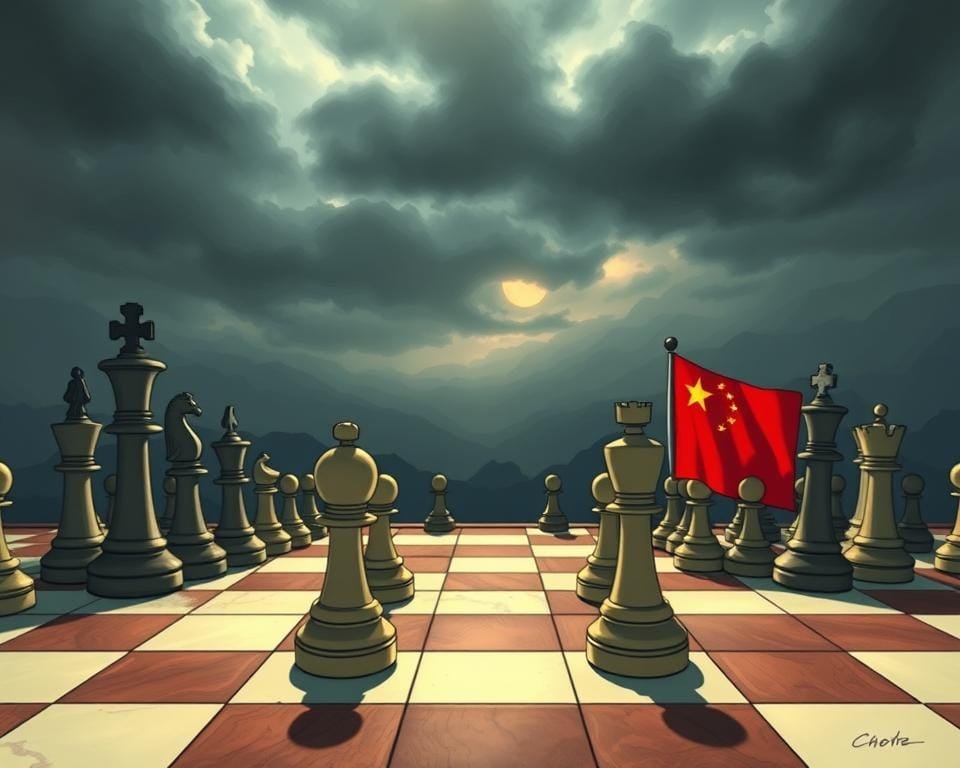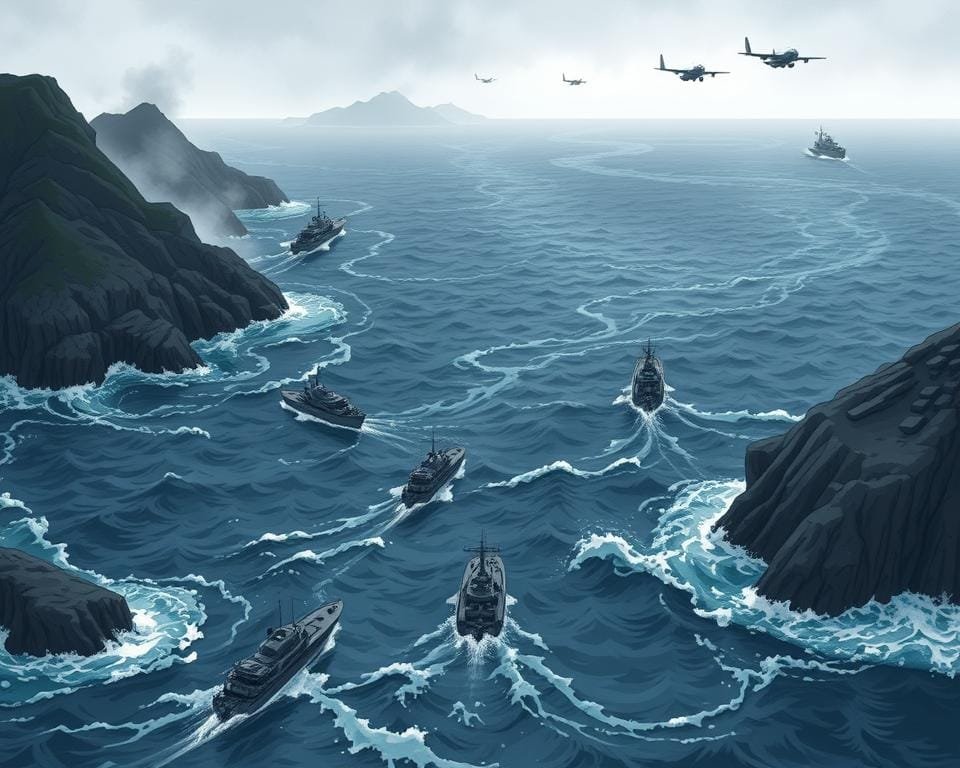The question of what happens if a major power takes military action against another nation is one that carries significant weight. The potential for global conflict and economic shock looms large, especially when considering the rapid modernization of military forces and the strategic ambiguity surrounding such actions. The stakes are high, and the outcomes are uncertain.
Military advancements, including ballistic missiles, fighter jets, and naval expansion, have reshaped the landscape of potential conflicts. These developments, combined with the inherent complexity of mounting large-scale operations, make the situation even more unpredictable. Historical comparisons, such as those to World War II operations, provide a stark reminder of the challenges involved1.
Current military activities, including drills and defensive exercises, highlight the tension in the region. The potential for a global economic downturn is significant, with projections indicating a 10% decrease in global GDP in the event of a full-scale conflict1. The ripple effects would be felt worldwide, making this a topic of critical importance.
Key Takeaways
- The potential for global conflict and economic shock is significant.
- Military modernization has increased the complexity of potential operations.
- Historical comparisons provide valuable context for understanding the challenges.
- Current military activities highlight ongoing tensions in the region.
- The economic impact of a conflict could be severe, with global GDP projected to decrease by 10%1.
China’s Strategic Motivations and Military Buildup
The modernization of military forces often reflects broader national ambitions and objectives. For Beijing, the unification of Taiwan is a cornerstone of its vision for national rejuvenation. This goal is deeply rooted in political messaging, with top officials emphasizing the island’s importance to sovereignty and territorial integrity2.
Political Objectives and National Rejuvenation
Chinese leaders have consistently framed Taiwan as an integral part of the nation’s identity. The president has repeatedly stated that unification is essential for achieving the “Chinese Dream” of national rejuvenation3. This vision is not just about territorial control but also about restoring historical pride and global influence.
High-ranking officials have reinforced this narrative through policy shifts and public statements. The emphasis on reclaiming the island is tied to broader strategic goals, including deterring foreign intervention and asserting regional dominance4.
Modernization of the People’s Liberation Army
The People’s Liberation Army (PLA) has undergone a renaissance, merging traditional strategies with cutting-edge technologies. From 2000 to 2016, its budget grew by about 10% annually, enabling significant advancements in force projection and operational capabilities4.
Recent developments include large-scale military drills and the integration of new technologies like cyber warfare and advanced missile systems. These efforts are designed to address the unique challenges posed by Taiwan’s geography and resilient military culture3.
| Aspect | Historical Context | Current Developments |
|---|---|---|
| Military Budget | 10% annual growth (2000-2016) | 5-7% annual growth (2016-present) |
| Technological Focus | Conventional warfare | Cyber warfare, missile systems |
| Strategic Goals | Regional deterrence | Global force projection |
This transformation is not just about hardware but also about adapting to modern warfare demands. As one official noted, “The PLA is evolving to meet the challenges of the 21st century, ensuring it remains a formidable force.” For more insights, explore this analysis on strategic approaches.
When china invades taiwan: Geopolitical, Economic, and Military Implications
The world watches closely as regional tensions threaten to disrupt the balance of power. The potential for a military escalation carries significant implications for global stability, economic systems, and international alliances. Experts suggest that the year 2027 could mark a critical juncture, with strategic windows extending into 20285.

A military blockade could serve as a less overt but equally disruptive form of aggression. Such a move would severely impact trade routes, particularly for the United States and its allies, who rely heavily on the region’s supply chains6. The economic fallout could ripple across industries, from technology to manufacturing, creating a global shockwave.
The role of the United States in this scenario cannot be overstated. The current administration has emphasized its commitment to regional security, with potential military and diplomatic responses already in discussion5. Real-time information gathering and intelligence assessments will be crucial in navigating the evolving threat.
Experts liken the strategic maneuvering to a high-stakes chess match, where every move carries profound consequences. The time factor remains uncertain, adding layers of complexity to predicting exact outcomes. As one analyst noted, “The geopolitical chessboard is set, but the players are still calculating their moves.”
The global fallout from such a conflict would be unprecedented. Economic disruptions, shifts in regional power dynamics, and the potential for international sanctions underscore the gravity of the situation. The world must prepare for a scenario where the stakes are as high as the uncertainties.
Operational Challenges and Environmental Hurdles
Navigating the complexities of a large-scale military operation involves overcoming significant logistical and environmental hurdles. Geography plays a critical part in complicating any amphibious assault, especially across the Taiwan Strait. The strait’s unpredictable weather and choppy waters add layers of difficulty to any capability to transport forces and equipment effectively7.

Logistical and Transportation Barriers
Transporting troops and equipment across the Taiwan Strait requires advanced planning and resources. The limited number of suitable landing sites further complicates the operation. Military exercises have highlighted the vulnerabilities of vessel mobility, especially when facing defensive missile systems8.
Coordinating air, sea, and land elements is a monumental task. Recent exercises have shown that even with advanced technology, synchronizing these components remains a challenge. The Chinese military must ensure seamless communication and coordination to minimize risks during transit9.
Natural and Technological Obstacles in the Taiwan Strait
The Taiwan Strait’s environmental conditions, including monsoon seasons, pose significant risks. These factors can hinder the effectiveness of any operation, making it harder to maintain control over air and sea space7.
Technological challenges also play a part. Advanced missile systems and cyber warfare capabilities add another layer of complexity. The Chinese military must address these obstacles to ensure the success of any large-scale maneuver8.
In summary, the combination of natural and technological hurdles makes the Taiwan Strait a formidable barrier. Overcoming these challenges requires meticulous planning and advanced capability.
Regional Reactions and Global Security Concerns
The global community faces a critical juncture as regional tensions escalate, raising questions about security and stability. The potential for a military confrontation has far-reaching implications, particularly for the United States and its allies. Understanding the dynamics of this situation requires examining strategic interests, defensive innovations, and the broader impact on international alliances and trade.
U.S. Strategic Interests and Military Preparedness
The United States has long viewed Taiwan as a key partner in maintaining regional stability. With a 35% likelihood of an all-out conflict, the U.S. has ramped up its military preparedness, including significant arms sales and joint exercises10. The role of intelligence in monitoring developments cannot be overstated, as real-time data is crucial for informed decision-making.
Experts suggest that the U.S. relationship with Taiwan is pivotal in deterring aggression. The recent $280 billion bill to boost domestic chip manufacturing underscores the strategic importance of Taiwan’s semiconductor industry11. This move not only strengthens economic ties but also reinforces mutual security commitments.
Taiwan’s Defensive Innovations in Response
Taiwan has invested heavily in its defense capabilities to counter potential threats. Indigenous innovations, such as advanced missile systems and cyber warfare technologies, have significantly enhanced its readiness10. These efforts aim to deter aggression and ensure the island’s security in the face of escalating tensions.
The taiwan military has also focused on modernizing its forces, with defense spending projected to reach $20 billion by 202511. This investment reflects a commitment to safeguarding sovereignty and maintaining regional stability.
Implications for International Alliances and Trade
A full full-scale conflict would have devastating consequences for global trade and alliances. Disruptions to supply chains, particularly in the semiconductor industry, could ripple across the world, affecting economies and industries10. The potential for a humanitarian crisis further underscores the need for diplomatic solutions.
International alliances play a crucial role in addressing these challenges. The U.S. and its partners must work together to navigate the complexities of this situation, ensuring that regional stability is maintained. As one analyst noted, “The stakes are high, and the world must be prepared for any outcome.”
For more insights into the potential for a conflict between the United States and China, explore this analysis on global security concerns.
Conclusion
The complexities of a potential military escalation in the region underscore the delicate balance of power and the far-reaching consequences it could entail. The relation between involved parties plays a pivotal role in shaping both military strategy and international diplomacy. Over the next decade, the evolution of people liberation strategies will significantly influence regional security dynamics.
Military personnel training and preparedness remain critical in defending against potential threats. The unpredictable nature of developments, day by day, highlights the need for constant vigilance and adaptability. As history has shown, the stakes are high, and the outcomes remain uncertain12.
In summary, the challenges of navigating such a scenario are immense. The world must remain prepared for rapid changes, ensuring that stability and security are maintained in the face of uncertainty.
